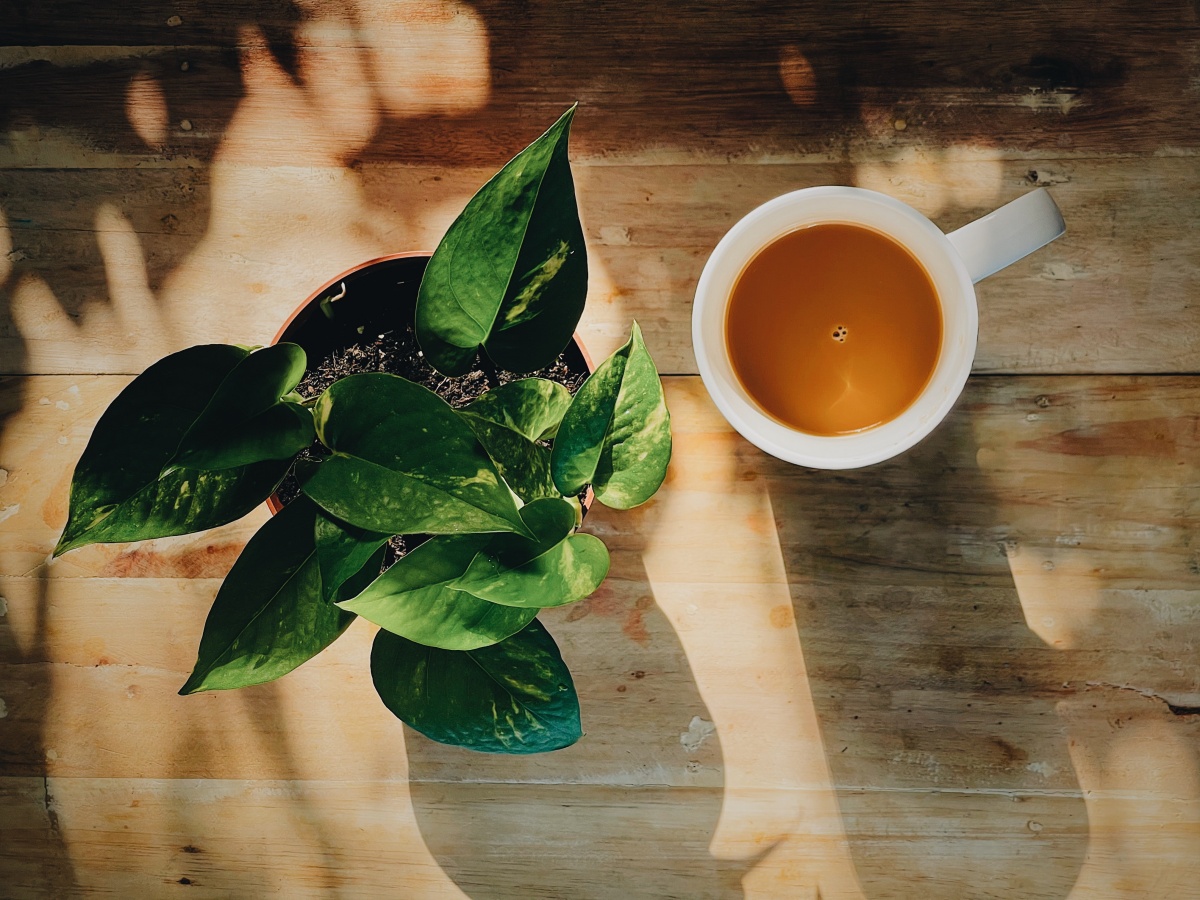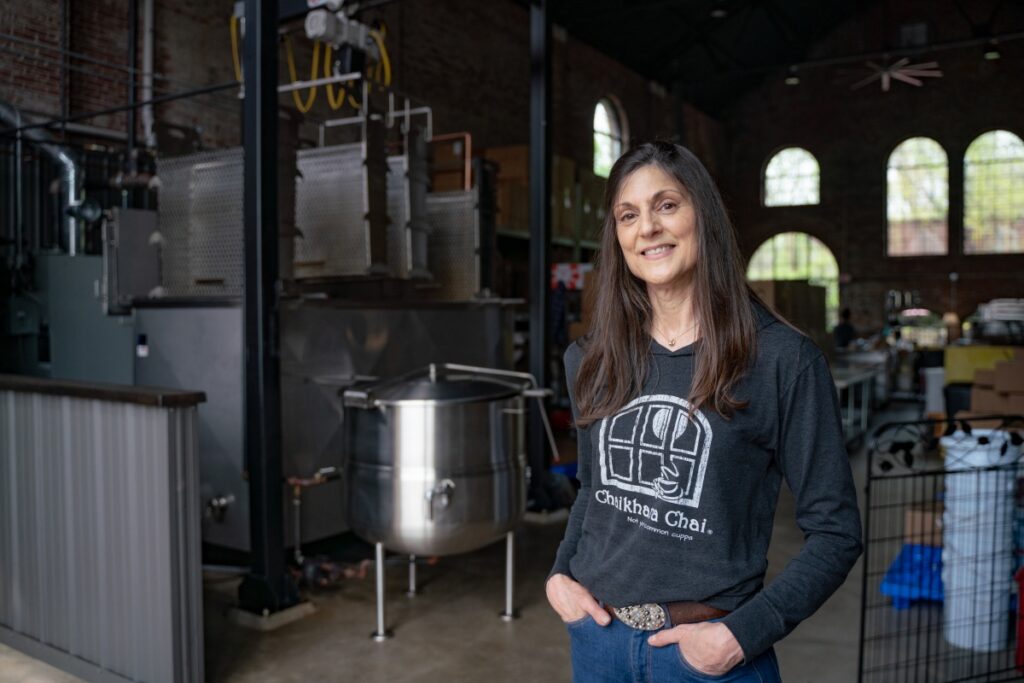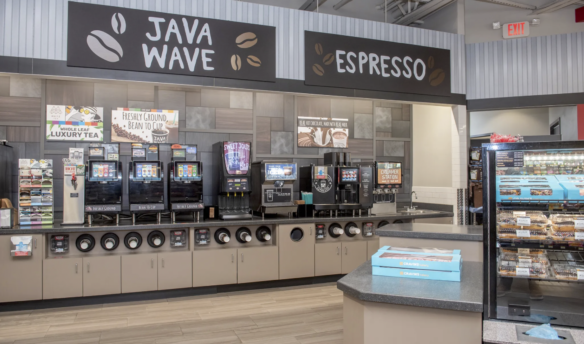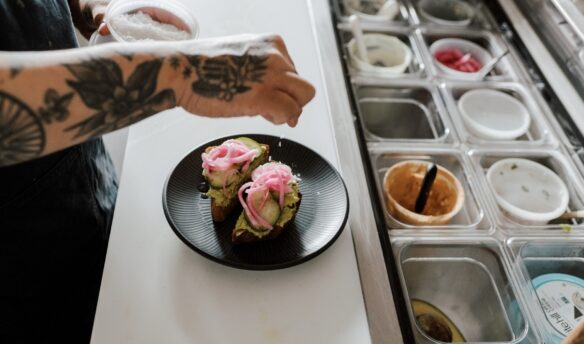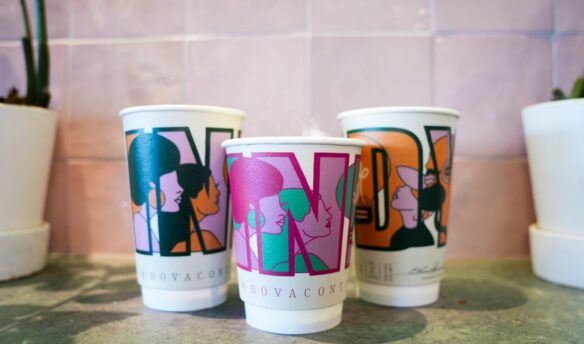In India, a day cannot begin without reaching for a cup of steaming chai—a blend of milk, tea, sugar, and a variant of spices such as cinnamon and ginger (famously known as Adrak chai), or cardamom. It isn’t just a drink to kickstart the brain, but the beverage that sets the rhythm of life in Indian houses.
It is common to see chaiwallas or streetside vendors constantly boiling tea in large clay pots or stainless-steel containers. The piping hot beverage is served in small glass cups or even cups made from unglazed terracotta called mutki chai for passing customers. In the evenings, a cup of chai is usually accompanied by a plate of samosas (fried flour dumplings filled with spicy potato filling) or even a packet of Parle-G cookies, an Indian brand of biscuits often enjoyed with tea.
Because chai can be made in different forms and does not stick to one particular recipe, American cafés began listing chai in various iterations. But how did Indian tea, with its milk and sugar, find its way into American cafes?
In the early 19th century, the British pushed for tea plantations in India, making India a tea-drinking nation. Later, Starbucks listed a drink called a Chai Tea Latte in the late 1990s, popularizing the drink for American drinkers and introducing them to a chai that was a renewed version of authentic chai. Chai tea lattes are usually a mix of milk and a concentrate of spices such as turmeric, cinnamon, fennel seeds, cloves, ginger, star anise, sugar, honey, and vanilla—it should be noted that chai tea was introduced in America in the late 1940s and we had green tea and black tea long before chai became popular in the 1990s.
Eventually, coffee shops nationwide began selling chai lattes, chai tea lattes, mocha chai lattes, vanilla chai lattes, and spiced chai drinks: all were listed alongside coffee staples like caramel lattes and hot chocolates. Now, you can find some form of a chai-based drink on most specialty coffee shop menus.
I reached out to Dawn Lewis, founder of Chaikhana Chai in Malvern, Penn. She started Chaikhana Chai in 2012 and has seen chai grow and evolve in coffee shops over the last ten years. In a market where coffee still bags the front of the menu in cafes, Lewis has had to find ways to make sure her chai stands on its own.
The Need to Use Real Ingredients
Speaking about how it all began, Lewis tells me that her Seattle roots, combined with her love for natural food, drove her to start Chaikhana Chai. She mentions that she wanted a chai that didn’t have artificial ingredients. At the time, around the mid-2000s, she saw nothing that focused on natural ingredients on the market.
Over the phone, Lewis says, “I brewed chai on the menu of Caffe Craze, a coffee shop that I owned in Pennsylvania. I also began selling it to other cafes. As it got popular, I realized the name ‘Caffe Craze’ didn’t make sense [for the chai]. So in 2012, I launched my chai at Coffee Fest in New York under the brand Chaikhana Chai.”
Lewis’ chai doesn’t use any artificial extracts, which made Chaikhana Chai different when she first started. Lewis’ love of home cooking and making things from scratch, along with her love of tea, inspired her to focus on natural ingredients instead of artificial flavoring agents. She experimented with whole spices: fresh ginger, cinnamon, whole pepper, cardamom, and honey.
Lewis stresses that she doesn’t believe in powders. “Nothing ground, nothing refined. Everything is natural,” she says. “The ginger root has fiber, and cinnamon gives out oils that give the chai a genuine flavor essence. I didn’t take any shortcuts by using extracts, and I started buying the spices and chopping them down in a grinder to a coarse setting. I used real vanilla beans and fresh spices that impart flavors and make it more nutritious.”
Chai has health benefits as the whole spices used in chai act as antibacterial and antioxidants help boost immunity, protecting us from common colds and cases of flu. These spices aren’t necessarily used in daily cooking, so chai makes it easier to consume these spices without putting much effort.
Chai for Coffee People
Chai hasn’t had a smooth journey into American cafes: espresso-based drinks still dominate most cafe menus. Nevertheless, chai is found in many stores in the form of extracts, tea bags, chai lattes mentioned above, and other riffs on chai-based drinks.
Even though chai has been around for a long time, not many cafes have a separate chai menu. Chai is sometimes listed along with iced beverages, frappuccinos, or hot chocolate. Lewis, however, is quick to add that she is thankful to large companies for introducing chai to their menu—even if it wasn’t the kind or quality that she wanted. It allowed people to become familiar with the idea of chai, and it served as an alternative for people who don’t like coffee or hot chocolate.
Lewis says that she faced conflicting comments when it first came to bringing her chai into the market. “When I first started, the market was mostly extracts and powders. People suggested that I come up with powders because selling chai in the form of a concentrate makes no sense, and I had everybody telling me what will and will not work.”
With the desire to stay true to her vision, Lewis was specific that she didn’t want Chaikhana Chai to be an extract or a powder. “I wanted this chai to reach people in its true form, which is fresh, the way chai has always been for a long time,” says Lewis. “When it went to market, I realized that this is what the market is looking for, something that is natural and real. I believe in using natural ingredients even in my food, so I wanted to give people the same.”
People are indeed turning to drink options made from fresh ingredients. Because most cafes sell freshly brewed and ground coffee, it is fair that customers would begin to expect chai to be made from fresh ingredients rather than from a box.
Lewis says that she first started Chaikhana Chai with vanilla beans because everybody wanted a sweet beverage. Later, she started experimenting with a spicy masala flavor, and now it has become more popular than her original, sweeter versions. She believes that chai has to stand equally in cafes and has seen consumers’ palates change over time.
The Future of Chai
Like many cafe owners, the COVID-19 pandemic forced Lewis to make significant changes. “I ended up losing my café. Because Caffe Craze was in a train station and everything came to a standstill, people stopped going. I had it for 25 years, and it was a wonderful business.”
However, the pandemic allowed Lewis to focus on bringing her chai to the forefront. “I was sad to let the café go, but I had already started a production facility in Kennett Square for my chai, and I channeled my energy into that.” Lewis ended up reaching out to people directly through online sales, which helped her connect with people who bought her chai because, like her, they wanted a fresh and tasty chai.
“As far as sales are concerned, people were at home, so my sales switched from cafes to individual use,” she says. “Those are my real consumers, and I connected with people from different walks of life. Like me, these people like tea and nutrition and are constantly looking to add natural ingredients to their food.”
Despite the quick pivot she had to make during the pandemic, Lewis still has big dreams for the future of Chaikhana Chai. “I started from a batch of 3 gallons to 450 gallons at an apple juice facility— if they did not have the time on their schedule, I would be out of luck.”
Things have been tough, but Lewis is still hanging in and has plans to grow and expand her business. “I started my production facility in Pennsylvania with the plan of expanding it. Covid has slowed the progress, but the opportunity will not go away. I want to support grocery store coffee bars that support wholesome food, and Chaikhana Chai will appeal to people looking for a natural chai. I am also looking to reach out to more retail stores to place Chaikhana Chai on their aisles.”
For now, Lewis’ focus is on her existing facility, but she’s always looking toward the future. Perhaps one day we’ll see coffee shops with separate chai menus or more shops dedicated solely to chai (there are a few spots in the United States whose menus center on chai, like Chai Bar in San Francisco, but these shops are far and few between). But for now, enjoy fresh chai when you can and seek out makers like Lewis, who focus on fresh ingredients. We promise it’s worth it.
Cover photo by Benjie Delmonte on Unsplash.
Chital Mehta grew up in India as a chai lover. Her short stories have appeared in Landlocked Literary Magazine, Sangam Magazine, The Noyo Review, and Oyez Review. She lives in Delaware with her husband and children. Her website is www.chitalmehtajey.com



